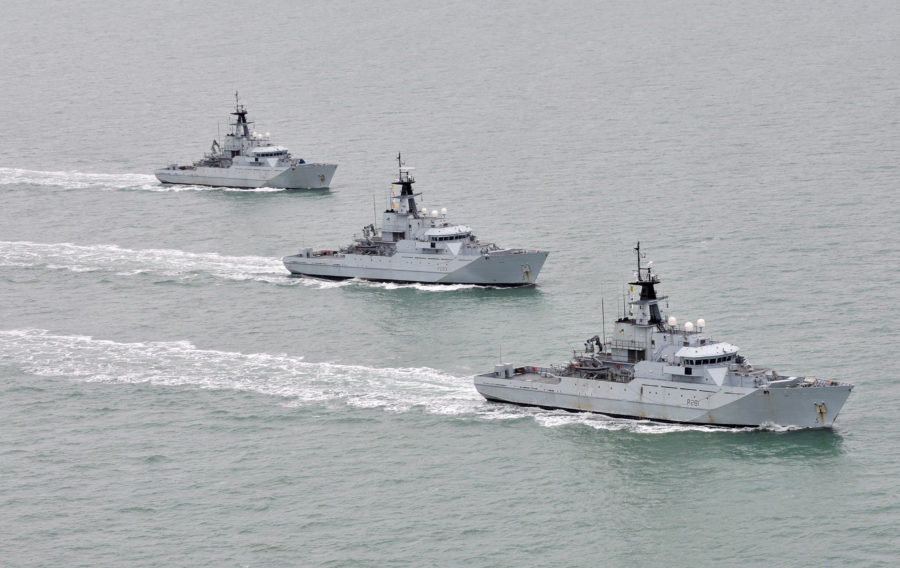
The ever-fluctuating scenarios around Brexit make predicting what is to come in 2019 a difficult task. As the UK counts down to leaving the European Union on 29 March 2019, many industry sectors will wonder what lies ahead. The impact on the defence industry, however, might take longer to manifest.
So far, the full implications of Brexit have yet to be felt. The combination of long-term contracts being the industry norm and the lack of true clarity on future trading conditions mean companies are adopting a ‘wait and see’ strategy. What is not in doubt is that the defence industry will continue to play a crucial role in the British economy.
This year saw the publication of former defence procurement minister Philip Dunne’s review, which was commissioned after the launch of the Modernising Defence Programme (MDP) to strengthen the Armed Forces in the face of intensifying threats.
The review made clear the extent of defence’s contribution to national economic and social value as it studied the scope of the Armed Forces and industry in order to provide an in-depth picture to inform proposals for reform in the MDP. The report makes clear that British prosperity relies strongly on defence.
The defence industry makes a huge contribution across all regions of the UK whether as a major employer, a large investor or a hub for local communities. The Ministry of Defence is the third largest landowner in the country with 220,000 hectares, often benefiting remote and rural communities.
The report revealed that 500,000 people work either directly or indirectly in defence and over 25,500 apprentices are developing skills within the industry. In addition to the MOD’s budget of almost £37 billion, defence’s direct contribution to GDP features on average over £7 billion of exports generated each year.
2019 will continue to see the defence industry drive growth across the aerospace, space, cyber and, increasingly, the knowledge economy and creative sectors.
The importance of defence to the economy was underlined in the Chancellor’s 2018 Autumn Budget, which saw an extra £1 billion allocated over the next two years to bolster the UK’s key capabilities such as offensive cyber, anti-submarine warfare and the nuclear deterrent. The Chancellor also earmarked an additional £160 million in 2019-20 for counter-terrorism policing to ensure that forces across the country are well equipped to work closely with communities and keep citizens safe.
The increase in political tension across the globe, growing and evolving cyber attacks, the threat of terror and the drive for innovation also look set to fuel significant growth in defence and security spending.
One example is the European Union’s efforts to develop its own integrated defence capabilities. Freed from Britain’s veto on a European Union army, the EU has already taken steps to tackle Russian aggression and the mixed messages from the United States around President Trump’s views on the relevance of NATO. Brussels has also launched a significant incentive for EU member states to cooperate on military procurement with a European Defence Fund worth €5 billion per annum.
President Trump’s demands for NATO members to ensure they meet their obligation of spending a minimum of 2% of GDP on defence is also likely to see a greater spend on military equipment. As for the United States, President Trump has approved an increase in defence spending of $82 billion from 2017 levels, to $716 billion in 2019. Allowing for inflation, this puts US spending on defence at its highest rate since the height of the Iraq War.
High on the list of priorities for many nations will be developing counter and offensive cyber capabilities.
Cyber attacks have increased in frequency over the past few years with threats such as malware, data breaches and hacks – state sponsored or otherwise – and it seems likely that this trend will continue.
Ransomware, which exploits users’ failure to follow best practice, is again likely to cause significant disruption as perpetrators view the practice as low-hanging fruit, especially as the adoption of smart technology continues at pace.
Due to their level of sophistication, cyber attacks carried out at national level – such as targeting critical infrastructure or manipulating elections – have the potential to cripple a nation’s operations and are usually politically motivated.
Back in the UK, the Defence Infrastructure Organisation (DIO) launched its new commercial strategy, setting out its ambitions to transform the way the agency does business.
The strategy has a focus on increasing supplier numbers, offering greater opportunities to small and medium-sized enterprises as well as to larger suppliers. The strategy also gives information on the types of opportunities available to prospective suppliers.
This was followed by recently released Procurement Plan, which explained DIO’s priorities to existing and potential suppliers as well as advising on how suppliers can navigate DIO’s procurement and approvals processes.
Suppliers and partners will now be able to view opportunities to bid for work which will support programmes such as the £4 billion Defence Estate Optimisation Programme, Future Defence Infrastructure Services across the UK Defence Estate and the £1.3 billion Clyde Infrastructure Programme.
DIO spends around £3 billion per annum on infrastructure works and services in the UK and overseas on behalf of its Front Line Command and Top Level Budget customers, enabling the UK Armed Forces to safely live, work, train and deploy.
While the next 12 months are likely to be dominated by Brexit, the importance of defence in terms of security and the economy only looks set to increase, in turn increasing the opportunities available to the defence supply chain.
If you would like to join our community and read more articles like this then please click here.
Brexit Clyde Infrastructure Programme Defence Estate Optimisatio European Union Future Defence Infrastructure Services







